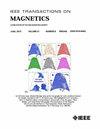A Circuit-Based Formulation for Soft Magnetic Materials Using the Jiles–Atherton Model
IF 2.1
3区 工程技术
Q3 ENGINEERING, ELECTRICAL & ELECTRONIC
引用次数: 0
Abstract
It is crucial to accurately estimate the performance of magnetic components, such as inductors and transformers, during their pre-design stage. The magnetic characteristics of soft magnetic materials are significantly affected by their excitation. For example, a time-varying excitation results in dynamic losses (eddy and excess loss components), and an excitation with harmonics leads to extra losses. To accurately model these components with a generalized approach, it is important to consider a physics-based hysteresis formulation in electromagnetic analysis. Some circuit and electromagnetic field simulators can model hysteresis characteristics using formulations, such as the Jiles-Atherton (JA) hysteresis model. However, these simulators require the JA model parameters as input, and it is a challenge for simulation engineers to calculate the JA model parameters. In this work, an inductor circuit element is proposed using the JA model to define the magnetic characteristics of soft magnetic materials in an open-source circuit simulator. Providing hysteresis (or B–H loop) data as input to the circuit element in the proposed approach obviates the need of calculating the JA model parameters for circuit simulation. The B–H data are used to determine the JA model parameters, which are automatically transferred to the inductor model in the circuit simulation. The approach can be used to model the topological-based equivalent circuit of magnetic components, such as inductors and transformers.使用贾尔斯-阿瑟顿模型的基于电路的软磁材料计算公式
在电感器和变压器等磁性元件的预设计阶段,准确估算其性能至关重要。软磁材料的磁特性受其激励的影响很大。例如,时变励磁会导致动态损耗(涡流损耗和过剩损耗成分),而谐波励磁则会导致额外损耗。为了用通用方法对这些成分进行精确建模,在电磁分析中必须考虑基于物理的滞后公式。一些电路和电磁场模拟器可以使用诸如 Jiles-Atherton (JA) 磁滞模型等公式来模拟磁滞特性。然而,这些模拟器需要 JA 模型参数作为输入,而计算 JA 模型参数对模拟工程师来说是一项挑战。在这项工作中,我们提出了一种使用 JA 模型的电感器电路元件,以便在开源电路模拟器中定义软磁材料的磁特性。在所提出的方法中,将磁滞(或 B-H 环)数据作为电路元件的输入,就无需为电路仿真计算 JA 模型参数。B-H 数据用于确定 JA 模型参数,并在电路仿真中自动转移到电感器模型。该方法可用于对电感器和变压器等磁性元件的拓扑等效电路进行建模。
本文章由计算机程序翻译,如有差异,请以英文原文为准。
求助全文
约1分钟内获得全文
求助全文
来源期刊

IEEE Transactions on Magnetics
工程技术-工程:电子与电气
CiteScore
4.00
自引率
14.30%
发文量
565
审稿时长
4.1 months
期刊介绍:
Science and technology related to the basic physics and engineering of magnetism, magnetic materials, applied magnetics, magnetic devices, and magnetic data storage. The IEEE Transactions on Magnetics publishes scholarly articles of archival value as well as tutorial expositions and critical reviews of classical subjects and topics of current interest.
 求助内容:
求助内容: 应助结果提醒方式:
应助结果提醒方式:


